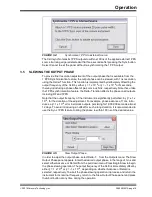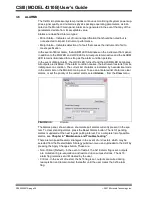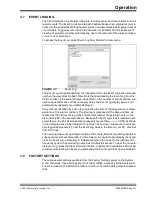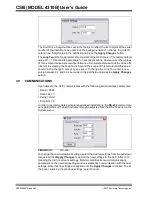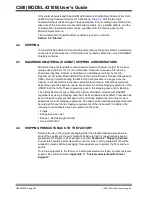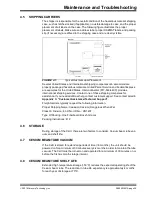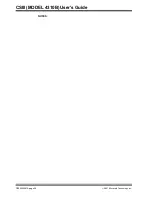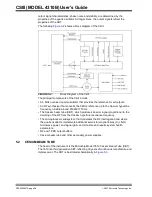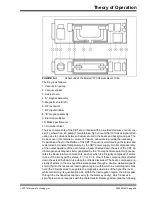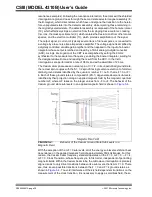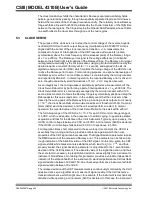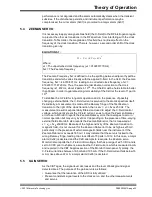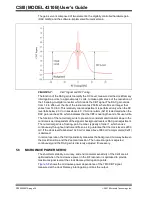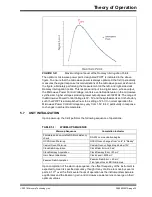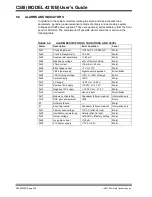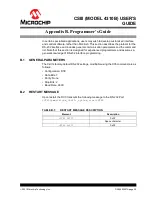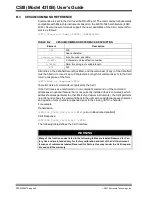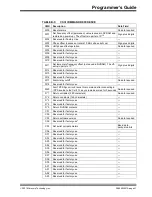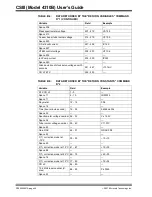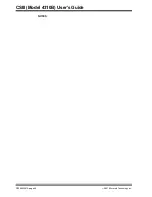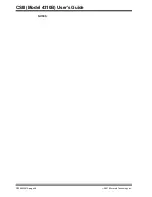
Theory of Operation
2021 Microchip Technology Inc.
DS50003057A-page 33
performance is not degraded and the alarm automatically clears when the transient
subsides. If the disturbance persists, and instrument performance may be
compromised, the minor alarm (0x07) is promoted to a major alarm (0x07).
5.4
ZEEMAN SERVO
It is necessary to apply a magnetic bias field (the C-Field) to the RF interrogation region
to prevent the other six transitions in the RF spectrum from interfering with the clock
transition. To first order, the magnitude of this field has no (linear) effect on the
frequency of the clock transition. There is, however, a second order shift of the clock
transition given by:
EQUATION 5-1:
The Zeeman Frequency δv
Z
is defined to be the splitting between adjacent hyperfine
transitions and which varies linearly with the applied C-field. In the CsIII, the Zeeman
frequency, δv
Z
= 46,379.831 Hz, leading to a corrected clock frequency of v
C
=
9192631771.8720 Hz. Thus, the second-order Zeeman correction to the clock
frequency is 1.872 Hz, about 2 parts in 10
10
. The C-field must be held stable to better
than 30ppm in order to guarantee long-term stability of the CsIII at the level of 1 part in
10
14
.
To stabilize the C-Field for long-term operation and in the presence of possibly
changing external fields, the C-Field current is servoed to the atomic spectrum itself.
Periodically, a measurement is made of the Ramsey fringe of the first Zeeman
transition to the right of the clock transition, that is at v = v
C
+ δv
Z
±250 Hz. The
measurement result is exponentially filtered and used to adjust the C-Field control
voltage, which gently steers the C-Field current, so as to drive the Zeeman Ramsey
error to zero. Monitor3 reports the Zeeman Ramsey error, that averages to zero in
normal operation but may vary by ±10 mV depending on the presence of time-varying
external fields. Monitor3 also reports the Zeeman Rabi error, that is measured at
v = v
C
+ δv
Z
±5000 Hz. Because of the high sensitivity of the Zeeman transition to
magnetic field, it is not unusual for the Zeeman Rabi error to be as high as ±75 mV,
particularly in the presence of external magnetic fields near the instrument. If the
Zeeman Rabi error exceeds 160 mV, it may indicate that the servo is locked to the
wrong Ramsey fringe, leading to a clock offset of 5 parts in 1012. In this case, a major
alarm (0x02) is declared and the CsIII attempts to reacquire the Zeeman servo.
Monitor3 also reports the C-Field control voltage, that has a range of ±2.5 VDC and is
set to 0 VDC prior to shipment, as well as the C-Field current, which is measured in mA
and reported in the CBT Supplies section of the Monitor3 main panel. Typically, the
C-Field current lies between 18.5 mA and 19.5 mA. If the C-Field current falls below 16
mA or rises above 22 mA, a major alarm (0x05) is declared.
5.5
GAIN SERVO
As the CBT ages, the signal level decreases and the level of background signal
detected rises. The purpose of the gain servo is as follows:
• Guarantee that the resolution of the ADC is fully utilized
• Present consistent signal levels to the clock servo, and the other measurements
and servos
V
C
V
0
8 V
0
V
Z
2
+
=
Where:
v
0
= The unperturbed clock frequency (v
0
= 9192631770 Hz)
δv
Z
= The Zeeman frequency
Содержание 4310B
Страница 1: ...2021 Microchip Technology Inc Advance Information DS50003057A CSIII Model 4310B User s Guide...
Страница 26: ...CSIII MODEL 4310B User s Guide DS50003057A page 26 2021 Microchip Technology Inc NOTES...
Страница 38: ...CSIII Model 4310B User s Guide DS50003057A page 38 2021 Microchip Technology Inc NOTES...
Страница 46: ...CSIII Model 4310B User s Guide DS50003057A page 46 2021 Microchip Technology Inc NOTES...
Страница 48: ...CSIII Model 4310B User s Guide DS50003057A page 48 2021 Microchip Technology Inc NOTES...

